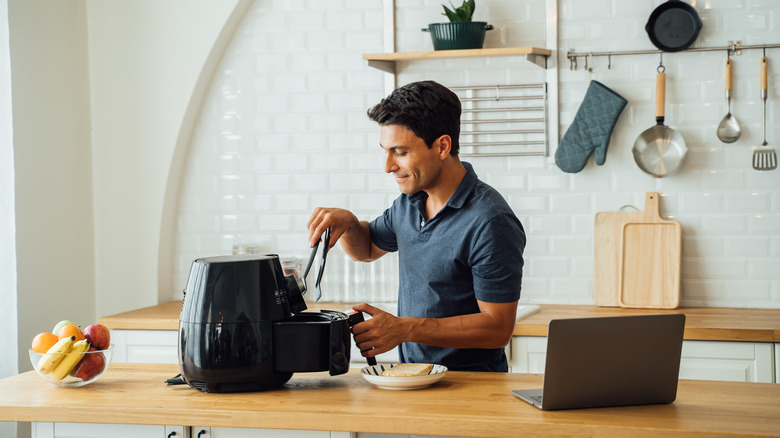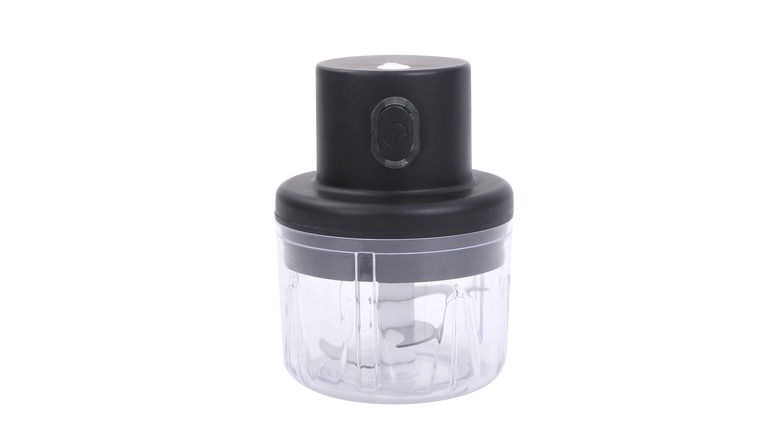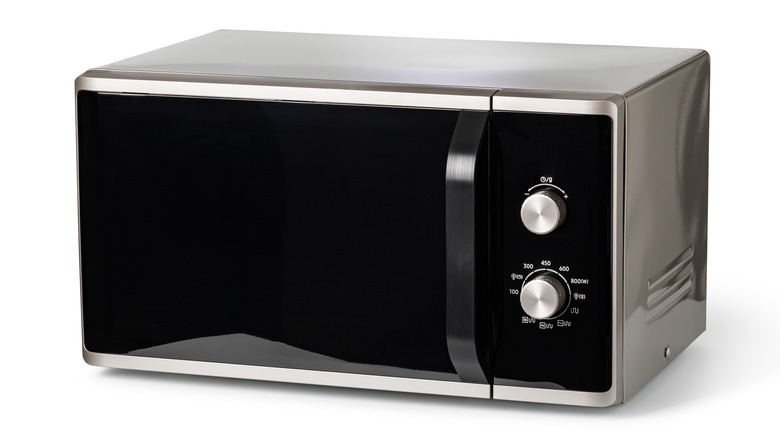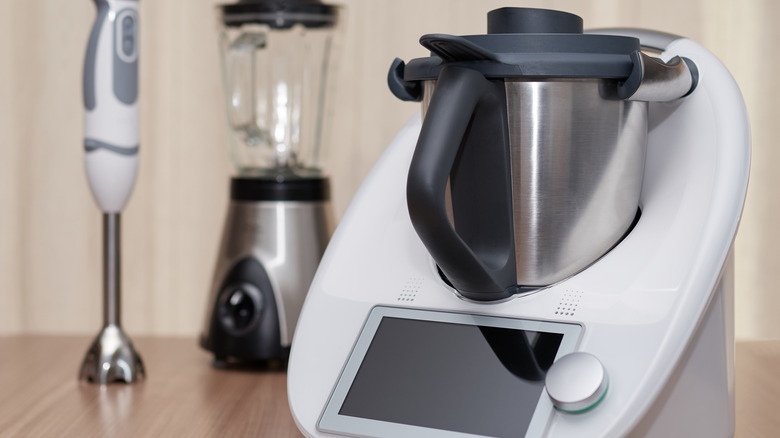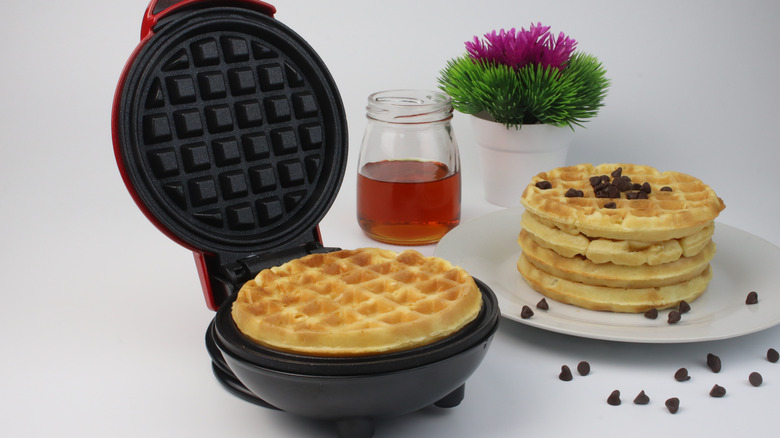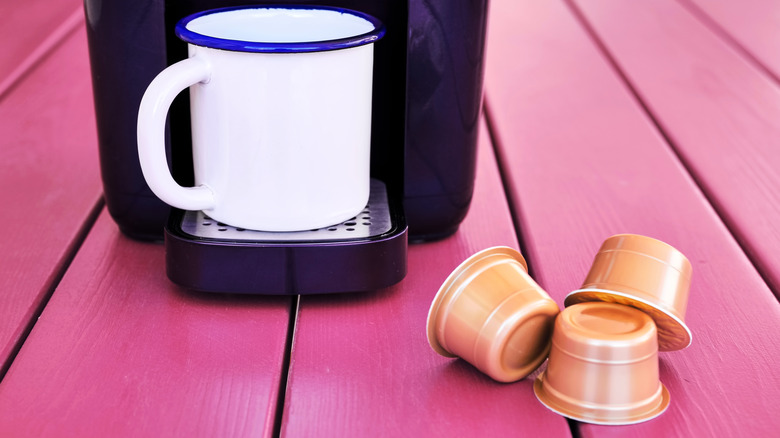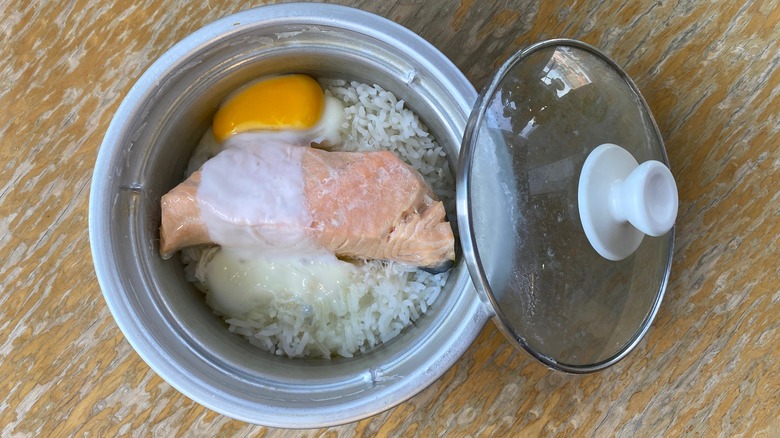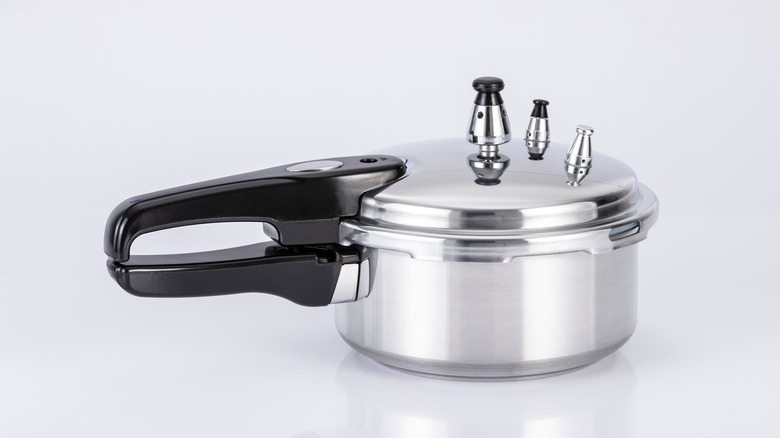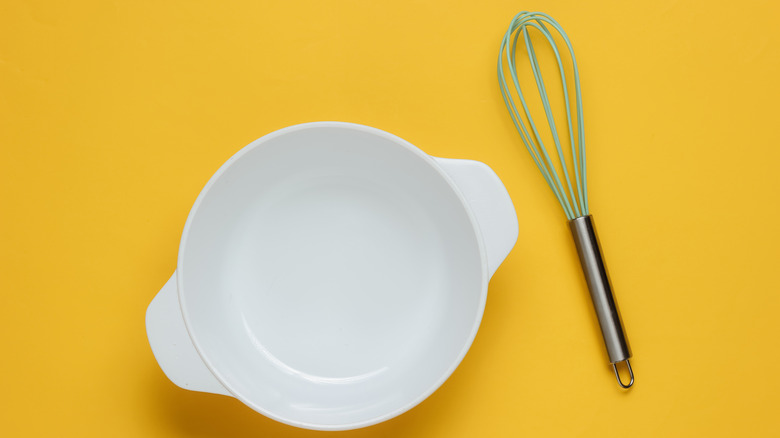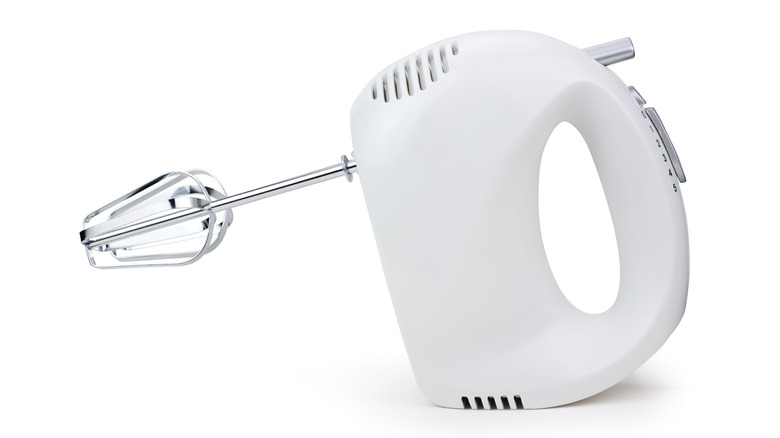11 Adorable Miniature Kitchen Tools You Actually Need
Film and television would have us believe that kitchens are large, rambunctious affairs thrice blessed with counter space to spare, enough gadgets to shame a CES stall, and a seemingly endless flow of steaming pancakes resting upon a full-sized table. It all looks suitably glamorous.
Still, in the real world, corner kitchens often compete with city-living pocket galleys, shared meal-prep stations, and boutique kitchenettes. Spatially challenged by design, these places can test the patience of the most frugal chefs. In such spaces, the square-inch footprint of any given device is just as important as its intrinsic utility. Choice — an often-overvalued metric — sometimes leads to compromises. In the fight against clutter, aspiring chefs sometimes cut corners they later regret.
Thankfully, compact tools designed to lighten the load exist for those of us who lack the requisite space to pirouette our way through a three-course meal. Designed to save space without sacrificing functionality, such devices have the potential to transform the way we prepare our meals and — at times — even manage to look adorable while doing so. Here, then, are some of the tiniest kitchen tools that refuse to let form sacrifice function.
1. Tiny food processors
Food processors differentiate themselves from blenders by their intrinsic functionality. Blenders are great at making shakes, crushing ice, or creating irresistible smoothies. Food processors can do all those things and so much more.
For someone focused on maximizing the space potential of their kitchen, a food processor might feel like a luxury. After all, its basic design brief centers on its role as a kitchen aid; it blends, chops, slices, and, if need be, dices. But for all its speed and accuracy, the food processor rarely performs functions that are not replicable by hand. Indeed, any chef or home cook armed with a good knife set, chopping board, and a willingness to put in some serious elbow grease can produce truly stunning results.
Still, one thing remains undeniable. It's easier to make everything from soup to sauce to aioli or a creamy milkshake with a food processor than it is to toil away with a collection of carefully selected hand tools. Little wonder then that food processors built with the spatially challenged kitchen in mind exist.
LINKChef seems to be leading the way here with two offerings that provide suitably small kitchen footprints without sacrificing power. Their 5-cup model weighs 2.5 pounds, measures 6.73 x 6.73 inches, and has a separate pulse control feature. Meanwhile, a 3-cup model — developed by Cuisinart — takes the idea of a miniature food processor to the next level. Weighing only 2.2 pounds, it nevertheless sports a powerful 250-watt motor and 24-ounce work bowl.
2. Mini microwaves
Microwave ovens — once heralded as the cooking appliance of the future — have become a near-permanent fixture of modern kitchens. As devices designed to heat food quickly, they excel, and yet, for all the advances made in their front-end functionality, their basic form has changed little since their earliest conception.
At their core, microwaves consist of two main parts: a magnetron and shielding to contain the radiation said magnetron spits out. A spinning tray — which ensures food is heated evenly — completes the design brief, save for a control panel mounted on the front to regulate the cooking time.
Size is limited by the magnetron and the need for a space large enough to cook a variety of items. This isn't to say that mini options are unavailable; they just tend to come with a premium price tag or novelty twist. Makita's 500-watt oven measures only 13.5 x 12.52 x 13.31 inches. There's enough room to make a mug of cocoa or heat some tasty leftovers, but don't expect it to defrost a Thanksgiving turkey anytime soon.
Back in 2009, Heinz floated the idea of the Heinz Beanzawave, a microwave that measured just 7.4 x 6.2 x 5.9 inches, which, as the name suggests, was designed to heat small pots of baked beans. USB-powered, it looks like the device never got out of the prototype phase, which — given its limited applications, is probably a good thing.
3. Thermomix
Of course, what constitutes miniature is a relative concept. A Citroën Ami is considerably smaller than your average Mini Cooper, and you'd be hard-pressed to carry certain giant baskets of mini muffins up a flight of stairs.
But what about a device that cuts back on many other kitchen staples? What if a product could make fantastic oatmeal, chef-quality sauces, flatbreads, or perhaps even mashed potatoes? Amazingly, such a device does exist. It's called a Thermomix.
The Thermomix has been around for a while — since 1961, in fact — and although it weighs a hefty 17 pounds and stands some 13 inches tall, it does have a trick or two up its sleeve. To start with, the versatile Thermomix comes closer than anything else on the market to replacing your entire kitchen. The latest TM6 model is capable of weighing, chopping, grating, peeling, reheating, cooking, and blending and will even clean itself after prepping your meal. The device boasts 16 separate functions and comes pre-loaded with 70,000 recipes.
Still, close to replacing your kitchen and actually replacing it are two separate things. It's no good for roasting meat or vegetables or baking bread. Frying food is also a no-no. While it can make sorbet thanks to its flash freeze mode, its temperature ceiling goes no higher than 320 F and only gets that hot during pre-set guided cooking modes.
4. Mini measuring cup
If there were ever a product more sensitive to the miniaturization treatment, it would surely be a measuring cup. Measuring cups tend to come in reasonably regular sizes. Your typical nesting set starts at 16 ounces and drops to 4 ounces. At the other end of the scale, gallon pitchers aren't unheard of and are presumably used when you want to rid yourself of some of those bulk products you ordered.
Still, there are times when recipes call for precise measurements that exist beyond the limit of your collection of measuring spoons yet fall short of the need for a full-blown cup. Fortunately, mini measuring jugs that allow precise measurements have been around for a while.
Several 2.5-ounce jugs explicitly designed to measure out espresso shots are readily available on the market. Yet, even these tiny offerings dwarf the mini measuring jug from UK-based Stains and Brights. With marks for denominations as low as 1 teaspoon, the borosilicate glass jug cup maxes at just 1.35 ounces and is small enough to measure out shots. It makes an intriguing alternative to the usual method of counting spoonful after spoonful of whatever a given recipe demands. Still, questions about how much space it saves combined with its reduced utility seem not altogether unreasonable.
5. Compact air fryer
An air fryer is one of those products that seems to sell itself. The premise is simple enough: They can cook the food you want the way you want in a reasonable time while using far less fat in the process. Less fat means fewer calories; coupled with its built-in portion control, you have what might loosely be described as a compelling product.
Air Fryers have been, around since 2010, although they initially struggled to make much headway. The name itself is a half-misnomer; air fryers do not fry food. They cook food via convection – which is to say, they blow hot air around a sealed chamber. The browning effect associated with fried food is, in fact, a function of temperature. Since air fryers reach temperatures up to 450 F – more than hot enough for your typical fried chicken dish – food cooked this way comes out golden brown and crispy.
As with microwaves, air fryers are limited in size by the need to cook food at volume. The top end of the scale provides 8-12 quarts of space — enough room for a chicken, pot roast, or truly monumental portion of fries. For those focused on keeping countertop clutter to a bare minimum, a wealth of mini air fryers hovering around the 4-quart mark are readily available. And if that's still a little bit too chunky for your taste, compact, 2-quart personal fryers measuring just 9.75 x 9.75 x 12.5 are not unheard of.
6. Mini waffle maker
Who doesn't like to wake up to the smell of fresh waffles gently sizzling on a hot plate? Waffles, in some form or another, have been around for a very long time, although we might not have recognized the hotcakes of antiquity as waffles per se.
When most people think of waffles, they think of Belgian waffles. Introduced to the American diet during the '60s, Belgian waffles took off in a big way. In 2020, 123 million Americans consumed waffles. Frozen waffles that slide into a toaster or toaster oven are an option, but for those committed to an authentic experience, nothing short of fresh batter will do.
Traditional Belgian waffles are around 7 inches in diameter for the circular variety and around 4 x 7 inches for those of the rectangular persuasion. Waffle Irons that cook 'four waffles at once' tend to fudge these numbers a little, producing four squares instead of two rectangles or one segmented circle. Double waffle makers exist, as do devices that are more concerned with size than geometric authenticity.
But for those looking for a single-living miniature take on the classic design, waffle irons that can cook one 5-inch circular waffle are just the thing. Diminutive stature aside, such irons come with all the features you might expect: non-stick, easy-clean heating plates, 550 watts of power, and an oh-so-sweet three-minute cooking time.
7. Compact coffee Maker
Few things feel more essential than a morning coffee. The days of freeze-dried coffee from a jar are not yet behind us — in 2022, the instant coffee market was worth $5.78 billion — but tastes have changed. Consumption of specialty coffee is rising. Indeed, according to a 2023 National Coffee Data Trends report, specialty coffee consumption sat at a five-year high.
Meanwhile, with coffee prices rising, it's little wonder so many have taken to brewing their favorite beverage at home. Indeed, according to Statista, some 67% of Americans purchase coffee beans from a local grocery store. Still, not all coffeemakers are made equal. Filter coffee contends with modern bean-to-cup grinders that aim to recreate — if not a coffee shop ambiance per se — then at least that coffee shop taste.
Size has often been an issue. Laden with moving parts as they are, such devices tend to be hefty affairs. Even ultra-compact models — such as the Jura Ena Micro coffee machine — sport dimensions of 12.7 x 9 x 17.5 inches. Considering all it is capable of, the Ena offers great coffee at a reasonable price. Dainty, however, it is not.
Thankfully, the filter machine is still going strong on the open market. The AeroPress Original Coffee and Espresso Style Maker doubles down on the old-world simplicity of a filter coffee machine by squeezing it into a genuinely form-fitting frame. Measuring just 1.87 x 1.87 x 4.63 inches, it can make up to one 10 ounce coffee at a time.
8. Pint size rice cookers
Breadmakers are conspicuously absent from this list, although — considering the basic defined size of most loaves — that's hardly surprising. Rice, however, is another great staple of human consumption and one more conducive to portion reduction; with that comes the opportunity to explore the world of miniaturized rice cookers.
In 2023, experts valued the rice cooker market at $220.4 million. They also estimated that the industry would grow by 9.6% between now and 2030. It is a small wonder that space-saving cookers of adorable design have begun to flood the market. A 1.5-quart portable rice cooker from Uszeoka looks great and doubles as a ramen maker. Meanwhile, a 16-ounce offering from Dash brings new meaning to the concept of a single-use item, although at 8.5 x 6.5 inches, it will actually take up more space on your counter than the Uszeoka.
9. Compact pressure cookers
In any debate as to what constitutes an essential kitchen tool – miniaturized or not – there is plenty of room to dismiss something as relatively niche as a pressure cooker. Home pressure cooking burst onto the scene during 1939 when Americans were introduced to the 'Presto,' the world's first commercially viable pressure cooker.
The device's allure was immediately apparent. The raised pressure inside the vessel cooks food quickly while tenderizing cuts of meat that might otherwise be tough and gristly. The science behind the process was, however, of secondary importance to most consumers, and pressure cookers — after a hiatus caused by the onset of WWII — took off in a big way.
Pressure cookers often find themselves relegated to the dark corners of a kitchen's least used cupboard. Ignorance of their efficacy is partly to blame for this — even though there are dozens of great recipes out there — but size also plays a part. The pressure cooker's reputation as a place to cook brisket, pot roasts, and family stews steered manufacturers towards high-volume designs.
Or, at least, that used to be the case. Nowadays, pressure cookers come in all shapes and sizes. Fissler's 2.6-quart offering is suitable for most cooktops, while Hawkins offers an all-aluminum — and impressively tiny — 1.5-quart model.
10. Mini whisk
A whisk is one of those omnipresent kitchen tools everyone seems to own, but few people can ever remember buying. Whisks have two primary functions. First, they add air to food. While some might question the need to aerate their dinner, the truth is it's an important technique used to create everything from whipped cream to meringues, cake batters, and sweet and savory soufflés. Second, they are used to make emulsions, those smooth, homogenous liquids required for sauces, rich custards, and batters.
It would be difficult to argue that whisks take up so much space that they truly deserve the miniaturization treatment, but the fact remains that mini whisks are simply too adorable to leave off this list. Nor would it be correct to say they have no objective function beyond their intrinsic cute appeal. There are times when you might want to add a little foam to your coffee or hot chocolate, beat a single egg, or else blend flour and raising agents together on your way to making some suspiciously fluffy biscuits.
Regardless of the stated purpose of any given tiny whisk, the sheer amount of choice on offer is pleasing. Balloon whisks with a 6-inch diameter sit comfortably next to 5-inch barista whisks designed for the coffee frothers among us. Silicon coil whisks come in similar sizes, with the business end specially designed to fit inside a cup, mug, or small bowl.
11. Little hand mixers
Of course, why bother doing something by hand when there's a powered option available? If all this talk of frothing, blending, and aerating sounds like too much work, an electric mixer might be just what you need.
Mechanical hand mixers have existed since the mid-19th century, but the electric hand mixer didn't arrive until 1922. In that year, KitchenAid — yes, that KitchenAid — flush with success from their 1919 debut of the world's first stand mixer, took its first step onto the miniaturization train, releasing the electric hand mixer to great success.
Hand mixers, of course, have to be compact by nature. Holding a device for long periods while you create silky smooth ribbons of perfectly mixed cake batter is not always easy on the arms. Still, there are lightweight and compact devices, and then there are mini, lightweight, and compact devices.
KitchenAid has five-speed hand mixers on the market with dimensions as low as 8 x 3.5 x 6 inches. Such a device, however, feels positively monolithic compared to the 'Electric Mixer Mini.' Measuring just 8.27 x 1.57 x 1.18 inches, this single-whisk device doesn't look robust enough for anything heavy-duty. But for those looking to froth some milk or prep an egg for an omelet, it will not only do just fine, but it will also look adorable as it does so.
